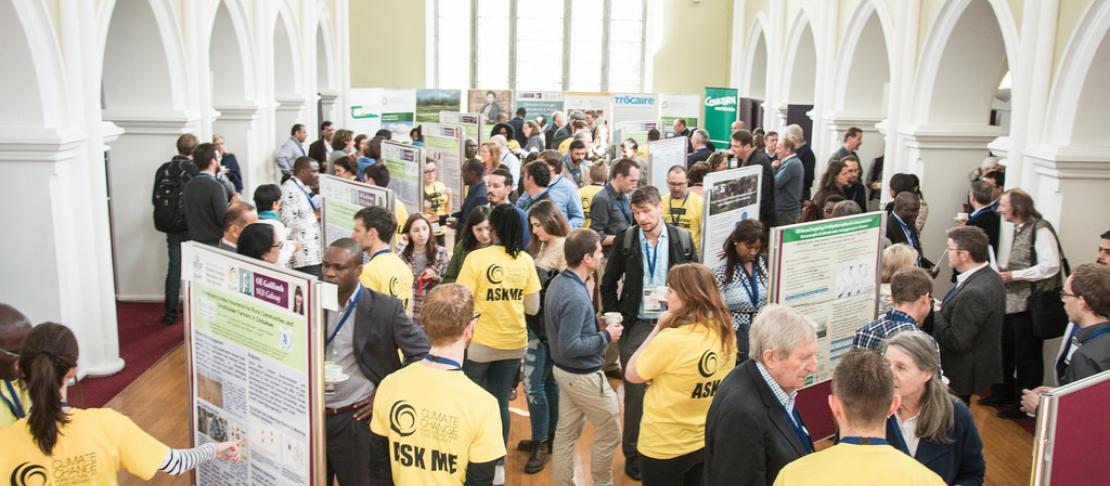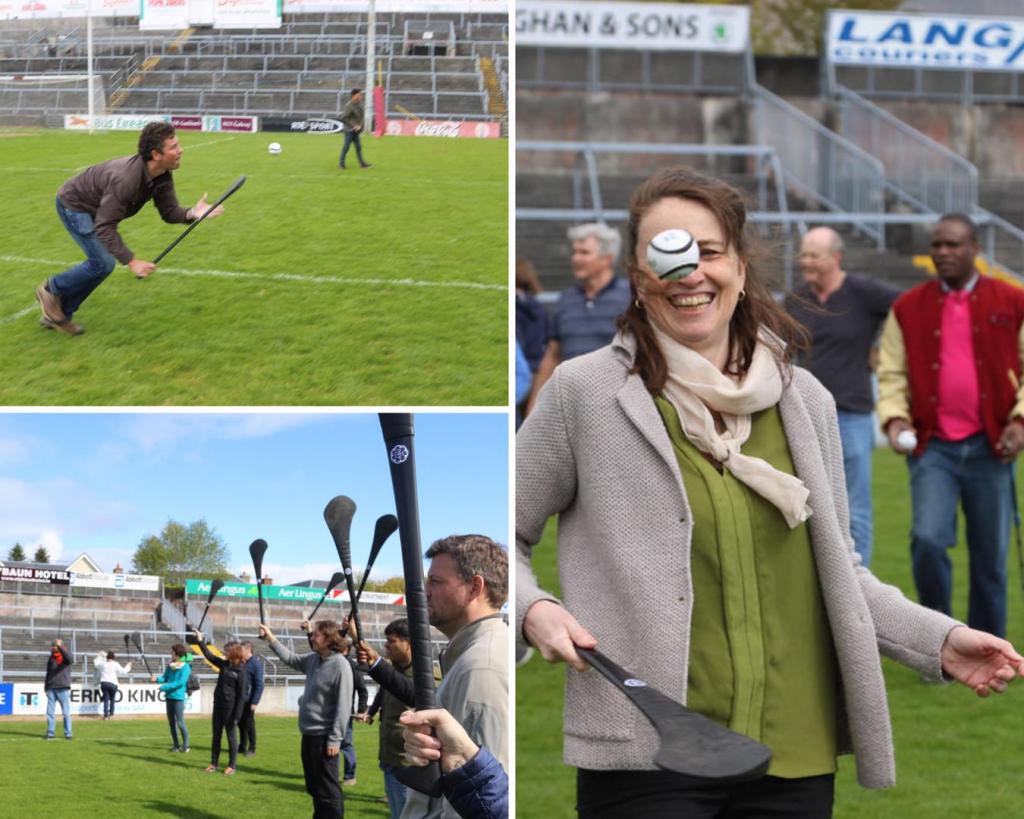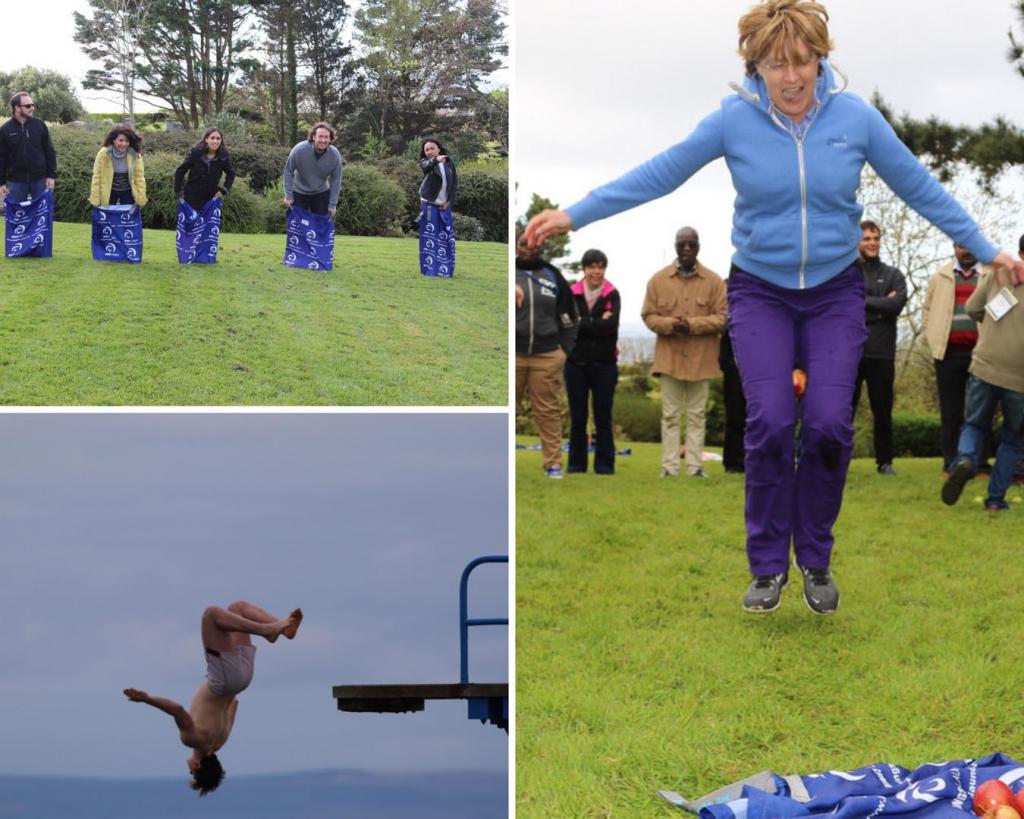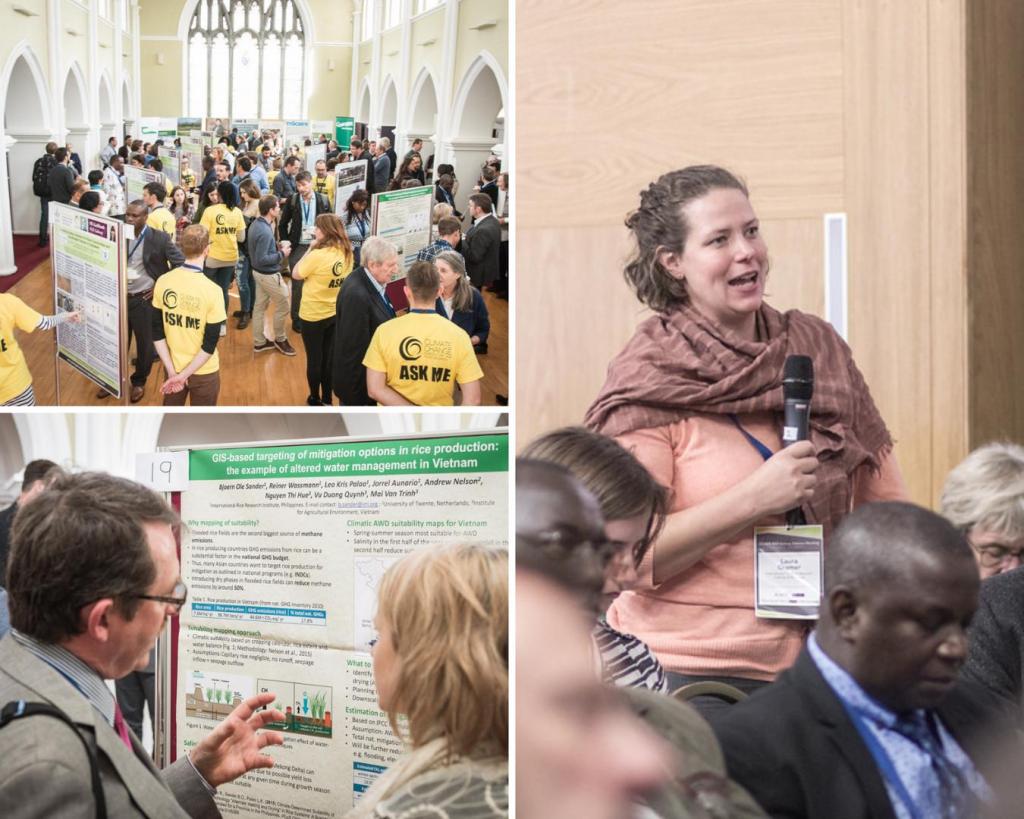Writing in groups: pleasure or pain? A bit of both

What happens when 106 scientists spend three days together trying to write 10 different journal papers? A lot of in-depth discussion and writing you might expect—but games and (mostly) friendly competition?
The CCAFS scientific conference held in April 2017 at the National University of Ireland in Galway was constructed around ten write-shops on a variety of different topics. The objective of each was to develop at least one journal article, for completion and submission in subsequent months. At the time of writing, six papers have already been published, with another seven or eight in various stages of completion. By any standard, this is a pretty good “return on investment” of time and energy on the part of the 106 people who attended.
One of these papers has recently been published in Agricultural Systems with 17 authors, most of whom were in the room for several 3-hour sessions spread over three days. Developing a paper under time pressure with many authors is not always straightforward. The number of writers clearly presents a challenge – some of them have travelled a long way, and all are giving up precious time, so there is definite pressure to keep people busy, make best use of their contributions, and come up with something worthwhile at the end of it.
Mind you, 17 authors is a mere bagatelle compared with the world record, currently reckoned at 5,154 scientists on a paper reporting the mass of the Higgs boson in 2015. The paper is 33 pages long, 24 of which are taken up with the author list and their institutions. You’d need a stadium to fit them all in. Does such “hyperauthorship” go against generally-accepted criteria for determining who should be an author and who a contributor to the work? Some would say so.
On the other hand, a strong case can be made for multiple-author papers particularly when addressing challenging problems that require multidisciplinary inputs. In such cases, large author teams may be inevitable, and considerable time may be spent resolving the different viewpoints and research paradigms that may be reflected around the table. Although we’re nearly two decades in to the twenty-first century, high-impact journals that publish genuinely multidisciplinary research are still not that easy to find. The incentives culture, and the widely-perceived need of “belonging to your tribe”, remain strong and seem to be changing only slowly.
I learnt a few things from the Galway experience of developing a publishable paper with a large, disparate and self-selected team. First, someone has to take responsibility for the process and occasionally make unilateral decisions, given that face-to-face time is inevitably limited. Second, if I were to do this again, I’d spend more time preparing for the face-to-face time, as I suspect it’s those interactions (rather than the emails before and after the event) that are going to lead to real novelty and innovation.
Beyond those two perhaps obvious lessons, you need to have fun as well: we played quite a lot of games in Galway. I’ve no counterfactual to offer, but I’ll bet the meeting was more productive as a result. Oh yes, and the director of CCAFS, Bruce Campbell, looks better in trousers than in a dress.



Photos by Ryan Institute. See more photos from the conference!
Philip Thornton is the CCAFS Priorities and Policies for CSA Flagship Leader.



